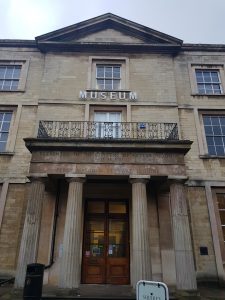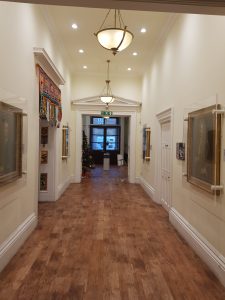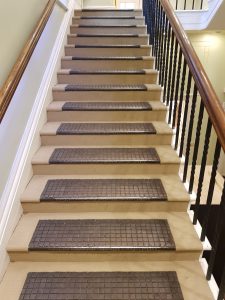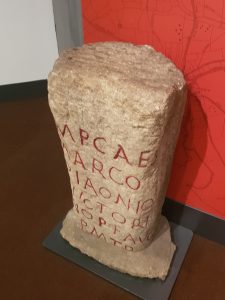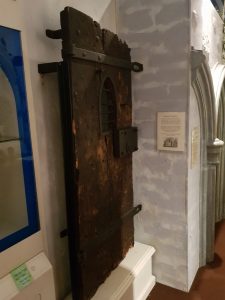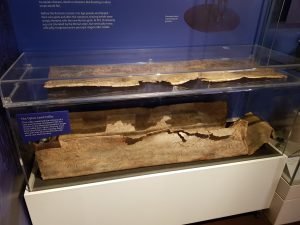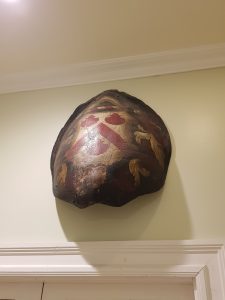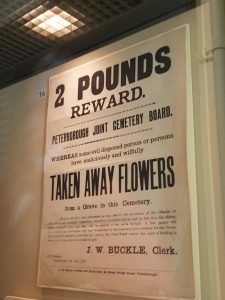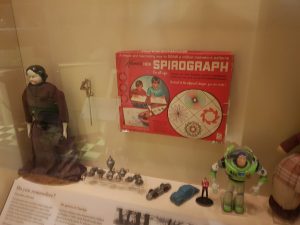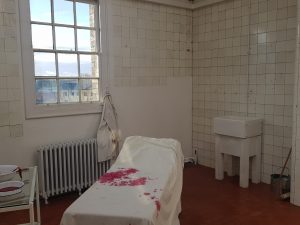Peterborough – Peterborough Museum
I tried to go to the city’s museum earlier in the year but there was a special event and it all looked a bit busy so I decided to come back. Today, on my return, I was the only visitor in the museum, which doesn’t bode entirely well for their finances.
I hadn’t realised that the building was for a long period used as a hospital and there were useful signs throughout the museum showing what used to take place in many of the rooms. This was the entrance hall where patients would come in and wait to be seen.
A little piece of history on the stairs, these are the original wooden steps which are designed to be anti-slip.
This is a Roman milestone which was located on Ermine Street, dating to around 271AD.
A heavy oak door which come from the abbot’s prison, with the power of imprisonment given to the abbey in the thirteenth century.
The Upton lead coffin which dates to around the third century and was used to bury a nine-year old boy. It isn’t known who the boy is, but it’s clear that the family had some significant wealth.
When Peterborough’s guildhall opened in 1671 there was a large meal provided for the dignitaries, which shows how little has changed over the centuries. They killed a turtle to make soup and in honour of the now dead animal, they served the soup in its shell and then painted it with the coat of arms of the MP, Sir Humphrey Orme. Orme died soon after, so I hope it wasn’t the turtle.
A fox for visitors to stroke should they so wish.
In the early twentieth century an “evil disposed person” stole some flowers from the cemetery. This certainly seemed to cause a lot of anger and the reward of £2 would have been a very tempting sum of money for anyone who could identify the culprit.
I appear to have reached the stage in life where toys I remember as a child are now in a museum.
This is the only remaining late-Victorian operating theatre which is still in place in the UK. It was laid out in 1897 and at the time was cutting edge (excuse the pun) and even now it looks rather terrifying.
This was a much bigger museum than I had expected and there was also a special exhibition on the ground floor entitled “Treasures”. This sadly runs only until 9 January 2019 and one of the highlights of the display is the Becket Casket dating to 1180. However, my highlight was the Peterborough Chronicle, a document written on vellum between 1120 and 1154, which also contains the first recorded mention of the word ‘she’. No photos could be taken in this exhibition and it was a little unfortunate that this had three staff, I assume for security reasons, and no visitors.
Overall, this is definitely a museum which is worth visiting and I spent around an hour here. The museum is laid out in an interesting manner, although there’s quite a wide coverage of different subjects and not much depth, but space is inevitably limited. I do appreciate how the museum has marked out how the building was used as a hospital, such as the former nurses’ rooms, the main ward and the surgeon’s room.

